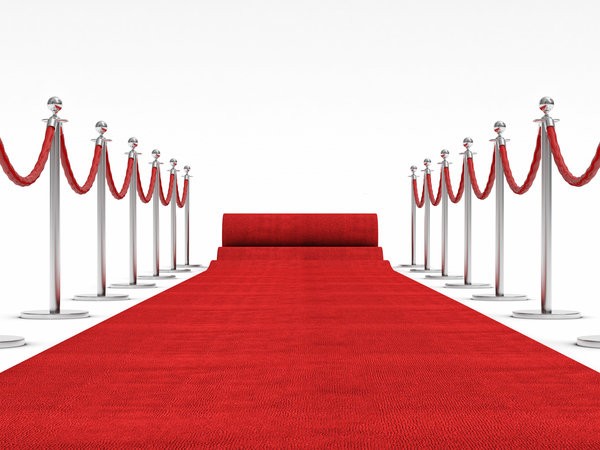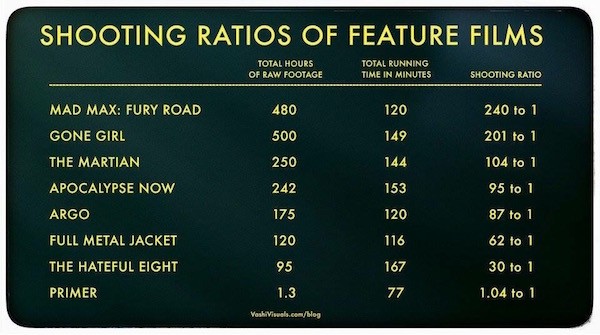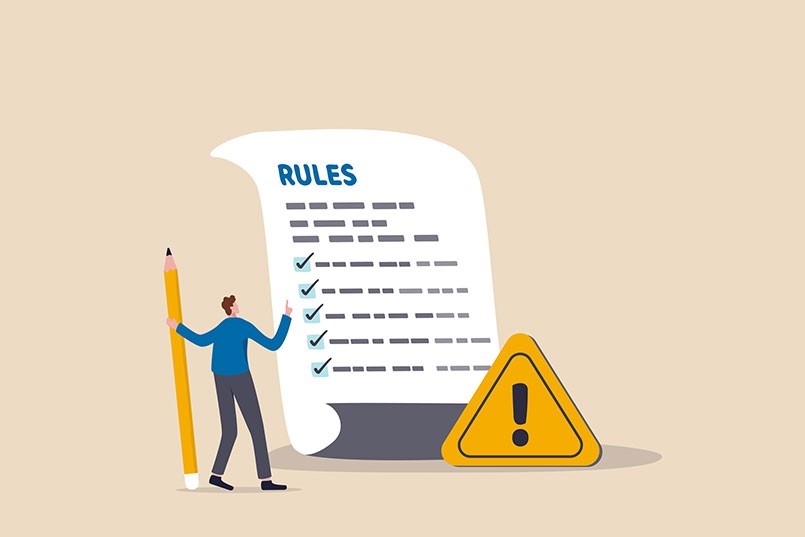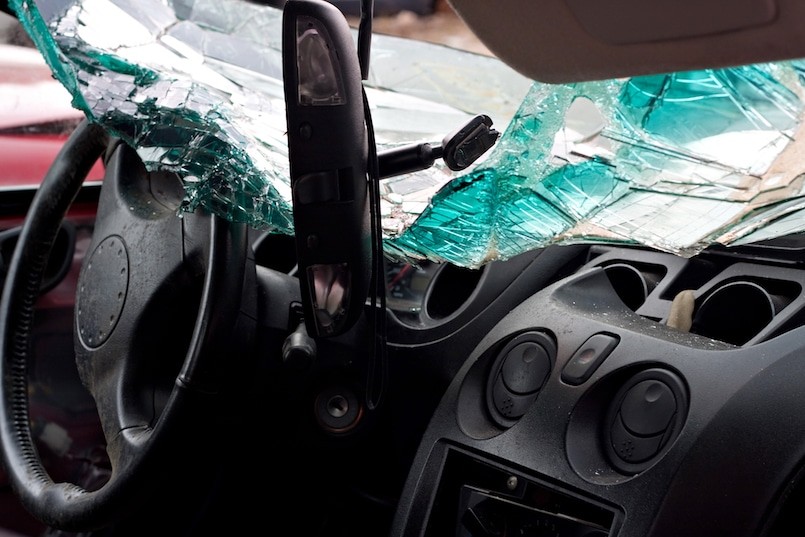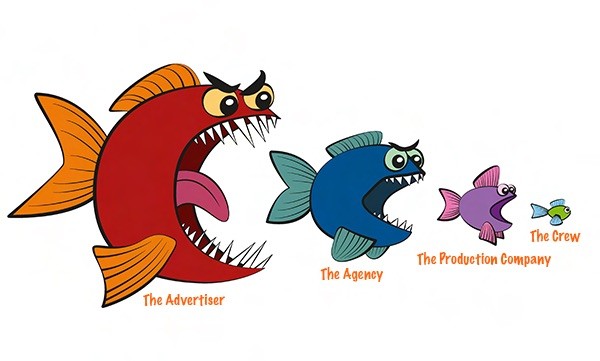Well the OSCARS are done for another year and controversy surrounding the nominated actor’s racial ratio is all “the-buzz”. Personally I am more interested in another ratio.
I am interested in the shooting ratio (see table below). Here we have a range of films including three films nominated for the Best Picture at this years Academy Awards. The shoot ratio is the number of hours and minutes shot during production compared to the actual hours and minutes that makes it onto the screen.
Lower shoot ratio. Lower production cost.
So why am I interested in this? Because the lower the shoot ratio the lower the cost of production. Do I have your attention? Take Primer for instance. This futuristic time travel film was reportedly made on a budget of $7,000.
Does this have anything to do with the cost of a television commercial? You bet your sweet life it does. With the advent of digital movie cameras and the passing of film, many would argue that film and processing costs have been removed from the production budget and therefore production budgets should be less. I would agree that should be the case.
So why are production budgets the same if not more than when film was King?
The simple answer is directors have had the burden of a limited film stock budget lifted so that they indulge in far more takes than they previously would have. What does this mean? It means that it takes longer to get a “go” take in the can (excuse my film reference, I should say on the drive) than it did when a director would limit him or herself to 20 takes per shot.
This is a fairly standard number of takes for a commercial production. Now many directors are shooting 50 takes per shot because the “film stock and processing budget” no longer applies.
So with these excessive numbers of takes we now have editing departments that are burdened with hours and hours of images to sift through and catalogue. In the days of actual film editing (as distinct from non-linear editing, Avids and Final Cut Pro for instance) the director could be looking at a rough cut on film by midday the day after the shoot. Now it takes up to 2 days just to log a job ready to edit due to the number of takes.
A television commercial is no feature film
Now remember that the shoot ratios above are for feature films, usually 70 minutes or longer. In the case of Mad Max: Fury Road, the 2 hour film (120 minutes) was cut from 480 hours (28,800 minutes) of raw footage.
But most commercials are still 30 seconds (0.5 minutes). Of course there is the director’s cut at 90 seconds (1.5 minutes) and increasingly the online version for YouTube at 2 minutes plus. But applying the shoot ratio of Mad Max: Fury Road, that means for a 30-second television commercial you would shoot 120 minutes or 2 hours of raw footage. But at the Hateful Eight shoot ratio that same 30-second commercial would require 15 minutes of raw footage.
It is this scale that has many commercials at a shoot ratio well in excess of both of these films.
The director and the genre set the shoot ratio
Lets look at the film ratios in the table of films above.
Of course Mad Max Fury Road has a high shoot ratio because of the very nature of the action genre. The director would have had up to 20 cameras rolling on each sequence. This is proverbially referred to in the film business as “Shooting the shit out of it” and is the common modus operandi when shooting an effects filled action movie.
After all, if you miss the shot because of some technical issue with the equipment, the time and cost to reset a huge action sequence outweighs the cost of the extra equipment.
So George Miller’s ratio on Fury Road is 240:1 so lets compare that to Quentin Tarantino’s ratio of 30:1 on the Hateful Eight. Quentin would have only used 1 or 2 cameras, a classic dialogue driven or narrative style feature film production technique also favoured by commercial production producers.
So why did Gone Girl another dialogue driven movie (as is the Hateful Eight), have such a high shoot ratio (201:1)? I was perplexed too, until I dug a little deeper only to find that the Gone Girl director David Fincher was know for his passion for shooting 50 takes of each shot.
Is shooting more, better?
So is Gone Girl a better movie than Hateful Eight technically or creatively? I guess it all depends on your personal opinion, perhaps the spontaneity of a 4 take shot with the actors still fresh and willing, outshines a labored and tired delivery that is the hallmark of a 50 take régime.
I personally witnessed both cases when working as camera crew in both the feature film and commercial business. In my opinion the fewer the takes the better the product (barring technical mishaps).
I find directors that indulge in anything over 10 takes are wasteful and obsessive and they are just wasting their clients money. Some will label me as anti-art and a luddite for expressing this view, others will consider me a pragmatic realist. Where do you sit on this question?
I am reminded of a friend of mine who runs a production house that produces Commercials and TV programing. When discussing the role and importance of directors he said to me “I could turn a bag lady into a director and get a better result from her than many of the directors I represent”. So are the high priced high profile directors better and worth their high regard? Are they better and more cost effective than a bag lady?
I would like to hear your views. So can directors make or break a production financially and creatively and why would you choose a certain director to shoot your commercial?
I look forward to some lively debate particularly from creative directors, many of whom (at least many of the ones I have met) believe that every commercial production is a mini feature film.
TrinityP3’s Production Management Assessment provides a detailed evaluation of your current production operation, and recommendations to achieve optimal performance.
Why do you need this service? Read on to understand more

